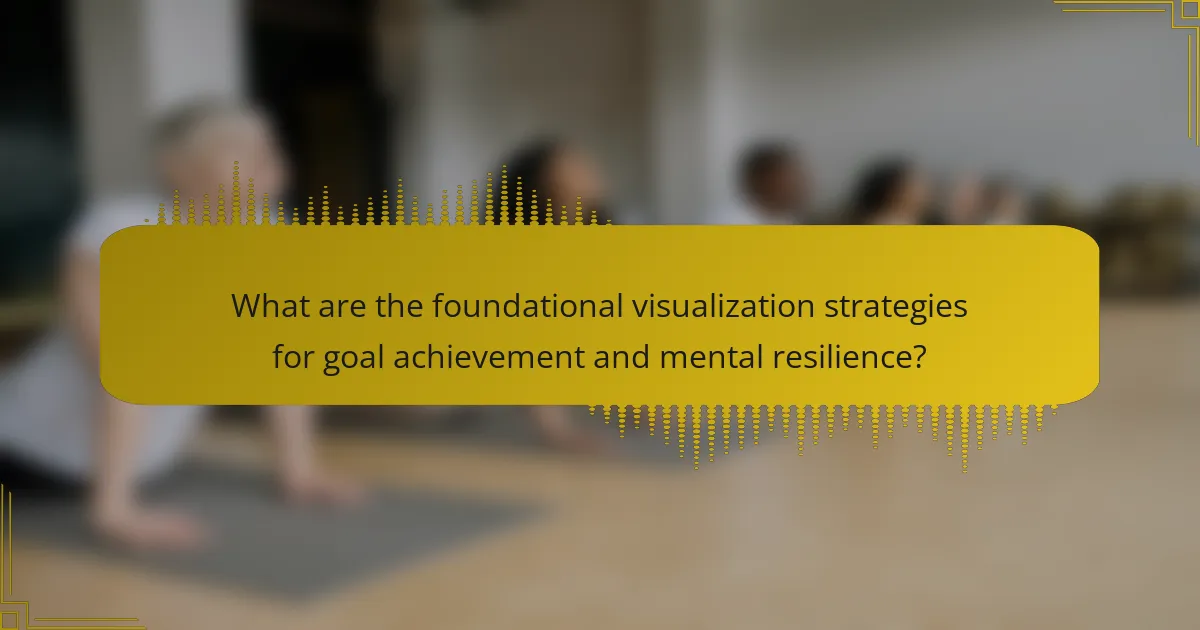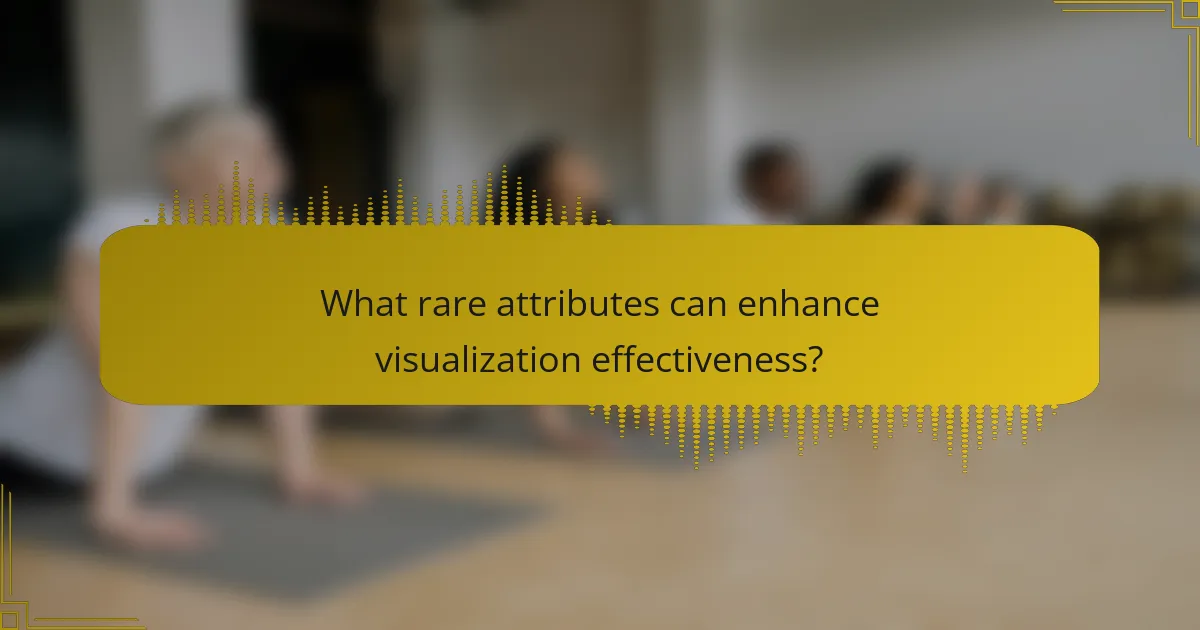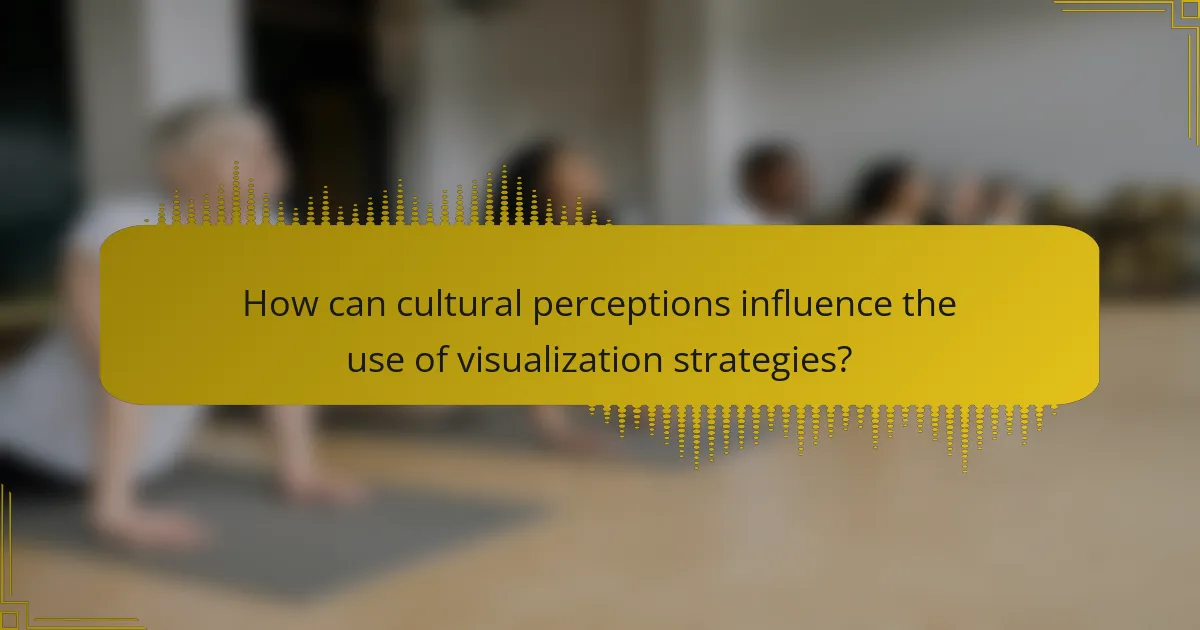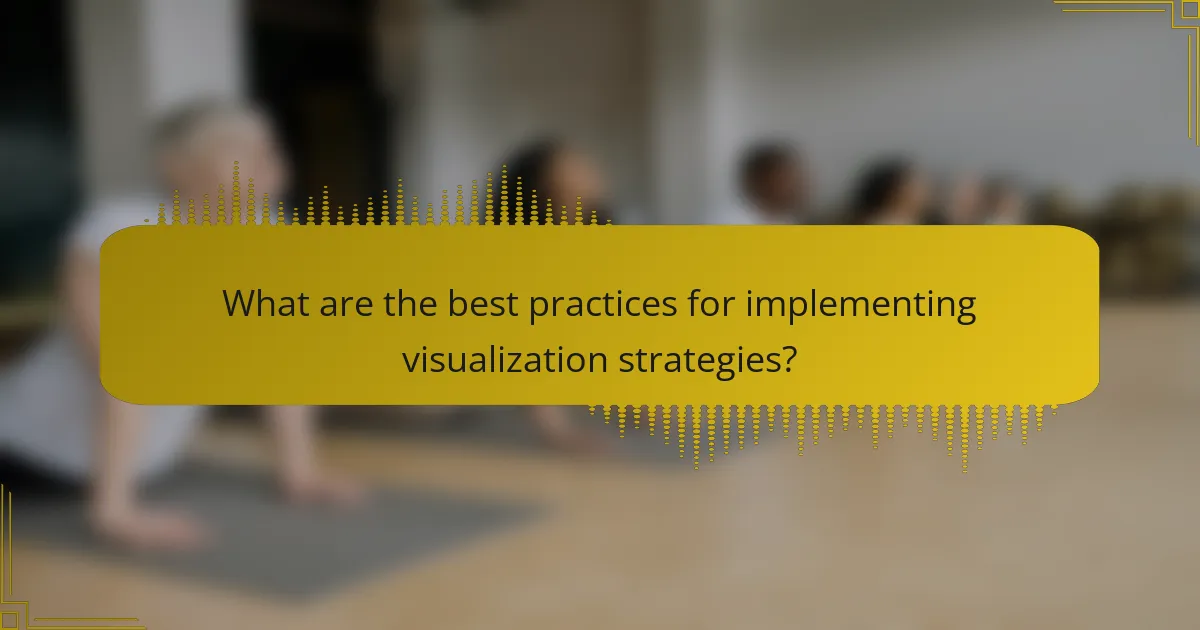Visualization strategies can significantly enhance goal achievement and mental resilience. This article explores effective techniques like mental rehearsal and guided imagery, the importance of personalized imagery, and the role of cultural perceptions. It also discusses how multisensory integration and narrative framing can improve engagement and retention. Implementing these strategies with clarity and relevance can foster a resilient mindset and boost motivation.

What are the foundational visualization strategies for goal achievement and mental resilience?
Visualization strategies enhance goal achievement and mental resilience by creating clear mental images of desired outcomes. Effective techniques include mental rehearsal, where individuals visualize success in specific scenarios, and guided imagery, which involves detailed visualization of positive experiences. These methods improve focus, boost motivation, and reduce anxiety, fostering a resilient mindset. Regular practice strengthens neural pathways, making visualization a powerful tool in personal development.
How does visualization impact goal setting?
Visualization significantly enhances goal setting by creating a mental roadmap, increasing motivation, and improving focus. It allows individuals to vividly imagine their desired outcomes, which strengthens their commitment and resilience. Research shows that visualizing success activates brain pathways similar to actual performance, reinforcing belief in one’s abilities. This technique not only clarifies goals but also helps overcome obstacles, making it a powerful strategy for achieving aspirations.
What role does mental imagery play in enhancing performance?
Mental imagery significantly enhances performance by improving focus, boosting confidence, and refining skills. Visualization strategies enable individuals to mentally rehearse their goals, leading to increased motivation and mental resilience. Studies show that athletes who employ mental imagery can improve their physical performance by up to 20%. This technique allows for the visualization of successful outcomes, which can reduce anxiety and enhance overall mental preparedness.
What are the psychological benefits of using visualization techniques?
Visualization techniques enhance mental resilience and goal achievement by improving focus, reducing anxiety, and boosting motivation. These psychological benefits stem from the brain’s ability to simulate experiences, which can lead to increased confidence and better performance. Research indicates that regular use of visualization can rewire neural pathways, making desired outcomes feel more attainable. As a result, individuals often experience heightened emotional regulation and a greater sense of control over their lives.

What unique attributes distinguish effective visualization strategies?
Effective visualization strategies are distinguished by their ability to enhance clarity, engagement, and retention. Unique attributes include the use of personalized imagery, which resonates with individual experiences, and interactive elements that foster active participation. Additionally, the integration of data storytelling transforms raw information into relatable narratives, making complex concepts more accessible. These attributes collectively contribute to improved goal achievement and mental resilience.
How can personalized visualization techniques improve outcomes?
Personalized visualization techniques enhance outcomes by tailoring mental imagery to individual goals and experiences. This approach fosters deeper emotional connections and boosts motivation. For instance, athletes often visualize success to improve performance, demonstrating the unique attribute of personalized mental rehearsal. Studies show that such techniques can increase goal achievement rates by up to 30%. By aligning visualization with personal aspirations, individuals develop greater mental resilience, enabling them to navigate challenges effectively.
What specific visualization methods are most effective for different goals?
Different visualization methods serve specific goals effectively, enhancing goal achievement and mental resilience. For clarity, here are the methods aligned with their purposes:
| Visualization Method | Goal | Effectiveness |
|———————-|——|—————|
| Mind Mapping | Idea generation | Stimulates creativity and organization of thoughts |
| Flowcharts | Process understanding | Clarifies steps and decision points |
| Bar Graphs | Performance tracking | Visualizes progress over time, highlighting trends |
| Pie Charts | Proportional data representation | Simplifies comparison of parts to a whole |
| Infographics | Information dissemination | Engages viewers with a blend of visuals and text |
| Vision Boards | Goal setting | Reinforces motivation through visual reminders |
These methods cater to various needs, from enhancing creativity to tracking progress, ultimately fostering mental resilience.

What rare attributes can enhance visualization effectiveness?
Visualization effectiveness can be enhanced by incorporating rare attributes such as multisensory integration, emotional resonance, and narrative framing. Multisensory integration involves engaging multiple senses, which can deepen understanding and retention. Emotional resonance connects personal experiences to the visualization, making it more impactful. Narrative framing presents information within a story context, enhancing engagement and relatability.
How can integrating sensory details elevate visualization practices?
Integrating sensory details significantly enhances visualization practices by creating vivid mental imagery. Engaging multiple senses improves emotional connection and retention of goals. For instance, visualizing a peaceful beach scene may involve imagining the sound of waves, the warmth of the sun, and the scent of saltwater. This multisensory approach fosters deeper mental resilience by making visualizations more immersive and impactful, ultimately aiding in goal achievement.
What uncommon techniques can boost mental resilience through visualization?
Uncommon techniques to boost mental resilience through visualization include immersive imagery, future self-visualization, and sensory engagement. Immersive imagery involves vividly imagining challenging scenarios and rehearsing responses, enhancing preparedness. Future self-visualization focuses on envisioning long-term goals and the steps to achieve them, fostering motivation. Sensory engagement incorporates multiple senses in visualization, creating a more impactful experience that strengthens emotional connections and resilience.

How can cultural perceptions influence the use of visualization strategies?
Cultural perceptions significantly shape the effectiveness of visualization strategies for goal achievement and mental resilience. Different cultures prioritize distinct values, which influence how individuals visualize success and resilience. For instance, collectivist cultures may emphasize group harmony, leading to visualization strategies that focus on community goals. In contrast, individualistic cultures might prioritize personal achievements, shaping visualization to reflect personal success. These cultural frameworks affect motivation, approach to challenges, and the interpretation of resilience, ultimately impacting the outcomes of visualization practices. Understanding these cultural nuances can enhance the adaptation of visualization strategies for diverse populations.
What regional variations exist in the application of visualization for goal achievement?
Regional variations in visualization for goal achievement reflect cultural attitudes and practices. In Western cultures, visualization often emphasizes personal empowerment and self-actualization, focusing on individual goals. Conversely, Eastern cultures may integrate visualization with collective goals and harmony, prioritizing community and relational aspects. Techniques such as guided imagery in Western contexts contrast with traditional meditation practices in Eastern contexts, showcasing unique applications. These differences highlight how cultural values shape the effectiveness of visualization strategies for mental resilience and goal attainment.
How do local success stories shape the understanding of visualization techniques?
Local success stories significantly enhance the understanding of visualization techniques by providing relatable examples. These narratives illustrate how individuals apply visualization strategies to achieve goals and build mental resilience. Success stories serve as motivational tools, showcasing practical applications and outcomes. They highlight the effectiveness of visualization in overcoming challenges, thereby reinforcing its value in personal development. By connecting with real-life experiences, individuals can better grasp the potential of visualization techniques in their own lives.

What are the best practices for implementing visualization strategies?
To implement effective visualization strategies, focus on clarity, relevance, and engagement. Start by defining clear goals to guide your visualizations. Use data that directly supports these goals, ensuring accuracy and relevance. Incorporate diverse formats, such as charts or infographics, to cater to different learning styles. Regularly review and adapt your strategies based on feedback and results. Lastly, foster an environment that encourages exploration and discussion around the visualized data to enhance mental resilience and goal achievement.
What common mistakes should be avoided when using visualization?
Common mistakes to avoid when using visualization include unclear goals, excessive complexity, neglecting audience needs, and inadequate feedback. Unclear goals lead to ineffective visuals that don’t support objectives. Excessive complexity can overwhelm viewers, hindering comprehension. Neglecting audience needs results in visuals that fail to engage or inform. Inadequate feedback prevents improvement and refinement of visualization techniques.
How can one optimize visualization practices for better results?
To optimize visualization practices for better results, focus on clarity, specificity, and emotional engagement. Utilize vivid imagery and relatable scenarios to enhance mental resilience. Incorporate regular practice to reinforce goals and adapt visualizations to reflect progress, ensuring they remain relevant and motivating.
What steps should be taken to create a personalized visualization routine?
To create a personalized visualization routine, follow these steps:
1. Define clear goals for your visualization practice.
2. Identify specific scenarios where visualization can enhance performance.
3. Choose a comfortable and quiet space for practice.
4. Develop a consistent schedule for daily visualization sessions.
5. Incorporate sensory details to make visualizations vivid and engaging.
6. Reflect on the outcomes and adjust your routine as needed.
How can feedback loops enhance visualization effectiveness?
Feedback loops enhance visualization effectiveness by providing continuous insight into performance and progress. They allow for real-time adjustments, fostering adaptability in achieving goals. This iterative process strengthens mental resilience as individuals learn from experiences and refine strategies. Incorporating feedback helps visualize outcomes more accurately, ensuring alignment with objectives. Ultimately, effective feedback loops create a dynamic environment that promotes sustained focus and motivation.